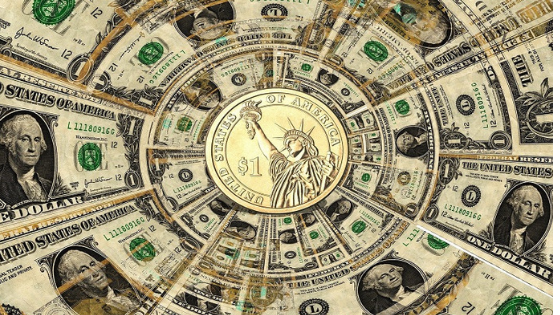Groundbreaking study quantifies economic costs of overvalued dollar
Washington. A new study of the US economy from the Coalition for a Prosperous America (CPA) economics team shows that the US dollar is overvalued by 27 percent. Adjusting the dollar to a competitive level would yield large benefits to the economy, including an estimated $1 trillion in additional GDP and up to an additional 5.2 million new jobs over six years.
The study, entitled Quantifying Economic Growth and Job Creation from a Competitive Dollar, uses the REMI economic model of the US economy customized by CPA to capture the impact of exchange rates on imports, exports, and the domestic economy. When the dollar moves down by 27 percent over six years, export volumes rise, which enables domestic industries—including manufacturing, mining, and agriculture—to grow at higher rates. The United States is the only major world economy that has suffered from an overvalued currency and persistent trade deficits for more than 40 years.
“President Trump and his team have been right to address unfair trade,” said CPA Chairman Dan DiMicco. “And the tariffs they’ve imposed are working. But due to a number of factors, including currency manipulation by certain countries and the workings of the world capital markets, the US dollar is persistently and significantly overvalued. That encumbers US producers in a serious manner. It’s a critical issue, and it must be fully addressed.”
“This study makes clear that moving to a strongly competitive dollar is a fight worth having,” said Michael Stumo, CEO of the CPA. “A competitive dollar is the most important tool we have to spur economic growth and job creation in the US economy. Otherwise, we’re leaving millions of jobs—and nearly a trillion dollars in economic growth—on the table due to our current, non-competitive currency.”
The study, authored by CPA Chief Economist Jeff Ferry and Senior Economist Steven Byers, shows that the US dollar has been persistently overvalued due to excessive demand for dollars in international capital markets, a phenomenon that has been labeled the “global savings glut” by former Fed chairman Ben Bernanke. The study quotes Peterson Institute Director C. Fred Bergsten, who said in 2015 that “every 10% rise in the dollar adds about $350 billion to the trade deficit and reduces the level of US economic activity by about 1.65% (with a corresponding loss of about 1.5 million jobs).”
According to the study, adjusting the dollar’s value by 27 percent in a smooth, linear fashion beginning in 2019 would lead to 12 percent average annual growth in manufacturing exports over the years 2020 through 2024 and an additional 1.4 million manufacturing jobs. Manufacturing imports would still grow, but by less than 1 percent a year.
Said Ferry, “Tariffs reduce imports on a sector-specific basis. But an adjustment of the dollar to a true trade-balancing equilibrium would have broader and deeper effects across the entire economy, impacting exports, imports, and domestic production. With a competitive dollar, we would see sustained economic growth of close to 3 percent a year, something the US hasn’t experienced for decades.”
Click here to read CPA’s complete Working Paper on the move to a competitive dollar.
Contact:
Melissa Tallman, Marketing and Communications Director
[email protected]
202.688.5145 ext 3













